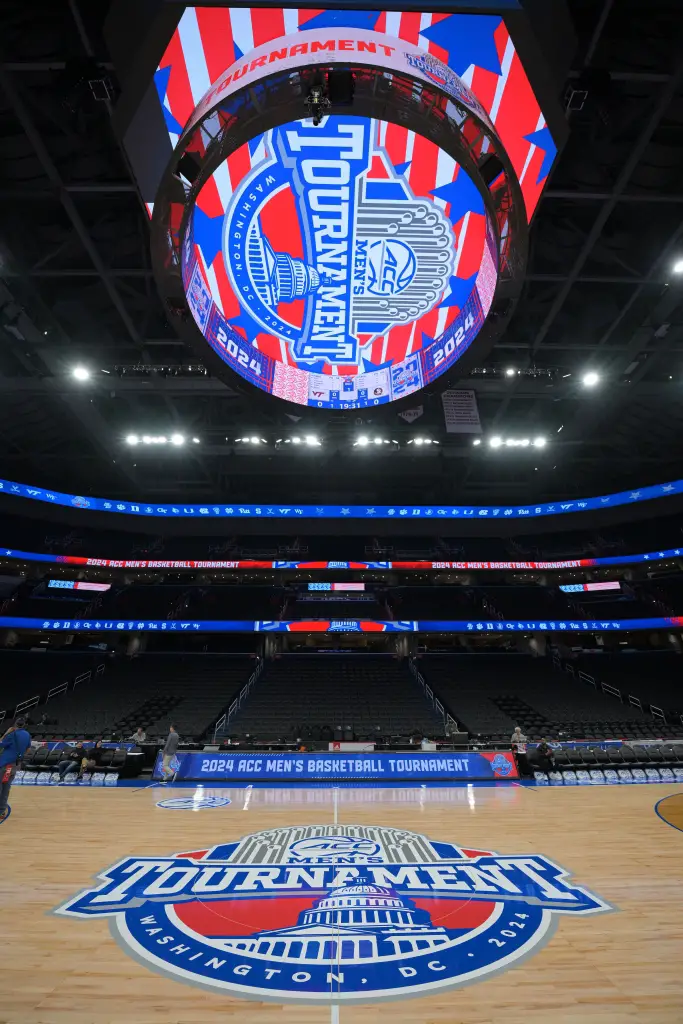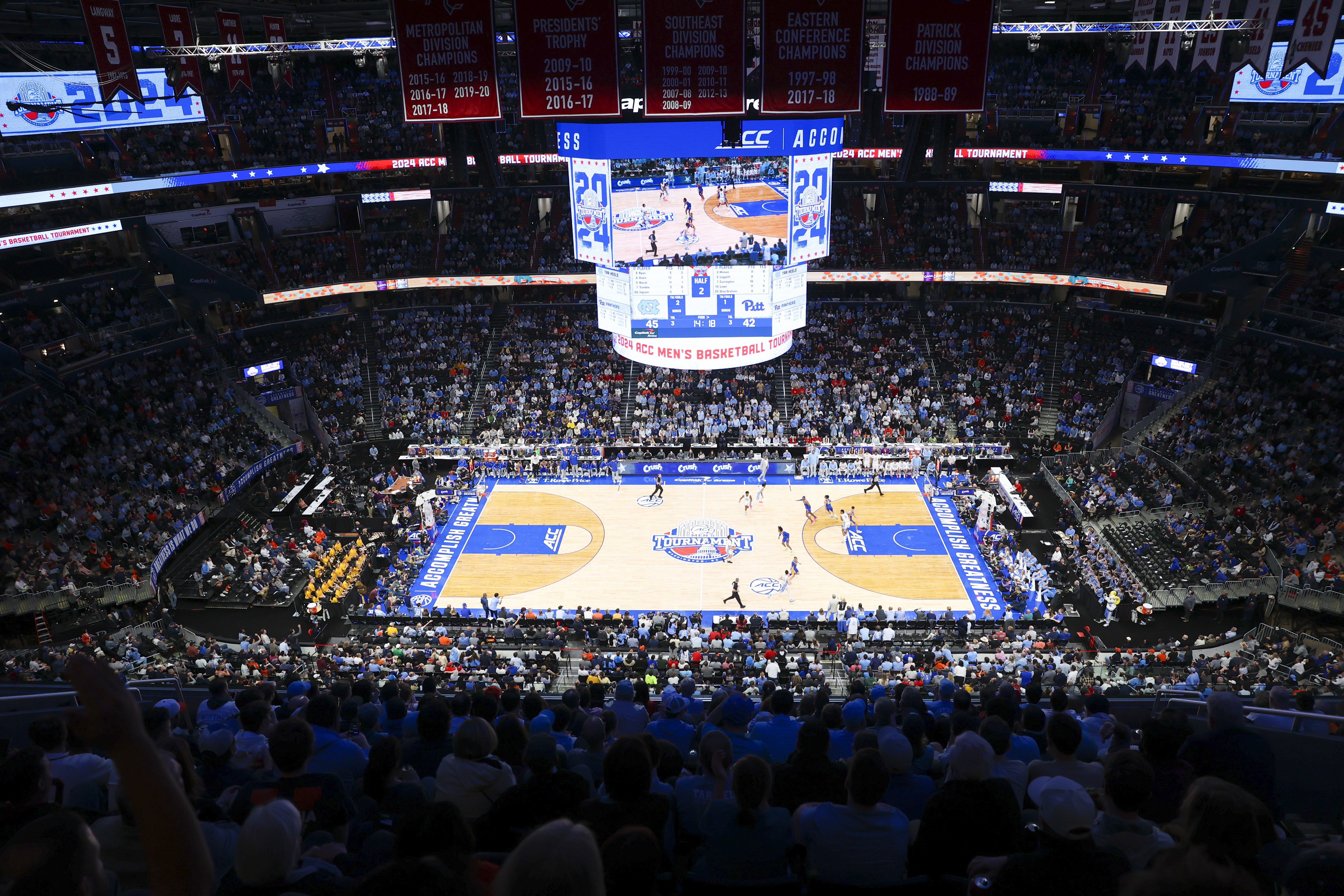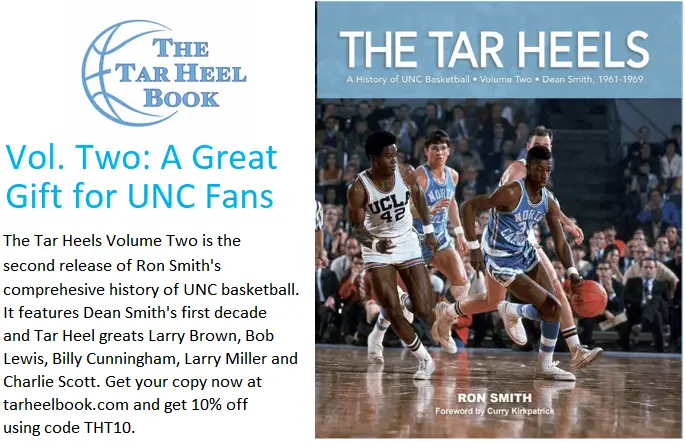By Thad Williamson
What an amazing last two weeks for ACC basketball! A fortnight ago, N.C. State played its way into the NCAA tournament with a historic five-game run through the ACC Tournament in Washington, knocking off local rivals Duke and North Carolina in the process.
Then Carolina, Duke, State and Clemson all won two games in the NCAA tournament to advance to the Sweet 16. No other conference has four teams, and no other conference has even one team below the 5 seed line advancing.
True, Virginia, which badly faded late in the season, laid a stinker in their First Four contest vs. Colorado State. But the strong performances, particularly of Clemson and State, against national competition reinforced the widespread view that certainly Pittsburgh, likely Wake Forest, and possibly even more ACC schools should also have received invitations to college basketball’s biggest stage.
This raises a question though: Why didn’t the ACC get those bids?
National media bias could be part of the issue. I also don’t see much clear evidence that the NCAA Tournament Selection Committee has a nuanced, consistent and defensible method of picking its final at-large teams.
But there are things the ACC could do better, too. Yes, it could toot its own horn more, all year long.
But more substantively, reform the schedule. The 20-game league schedule should be replaced by an 18-game league schedule, with the addition of four-team in-conference tournaments pairing ACC rivals with out-of-conference rivals, to take place in early February.
Why the shift? After the end of nonconference play, it’s really hard for a conference to adjust its relative ranking vis-à-vis other conferences. It’s not mathematically possible once all the conferences only play themselves.
This hurts the ACC, because the schools tend to have a) excellent coaches, b) a lot of talent and c) especially as of late, significant new arrivals through the transfer portal. This means it takes time to blend. The teams you see in November and December will often be a lot better in February and March. (Unless you are Louisville under Kenny Payne.)
Adding a nonconference game in February against quality leagues would adjust the picture. I would select quality leagues with nothing to lose and couldn’t say no as partners for those games — the Atlantic 10 comes to mind. But a direct challenge to the absurdly overrated Mountain West Conference would be great too. And the challenge games could involve multiple leagues.
Here’s the concept: Each team would play 18 league games: one against each league opponent and a home-and-home against a traditional rival. Those pairings would be Carolina-Duke, Wake-State, Clemson-Georgia Tech, Miami-Florida State, Virginia-Virginia Tech, Syracuse-Boston College, Pitt-Notre Dame, SMU-Louisville, and Stanford-California.
Then, on back-to-back nights a weekend in early February, schools would pair up with a second traditional rival to host a four-team mini-tournament. ACC schools would host semifinal games that feature nonconference opponents. Winners would then play the following night for the tournament title, and losers would play in a consolation game. The ACC school that did not host the regular-season game against its paired rival that year would host the mini-tournament.
Here are possible pairings for those mini-events: Carolina-State, Wake-Duke, Clemson-Miami, Georgia Tech-Florida State, Virginia Tech-Louisville, Pitt-Syracuse, Boston College-Virginia, Stanford-Notre Dame, and SMU-California.
It would play out like this: In a given year, State plays its league game against Carolina in Chapel Hill. Then it hosts a four-team tournament in Raleigh, which includes Carolina, (let’s say) A-10 school VCU, and Mountain West school Nevada. If State beats VCU and Carolina beats Nevada, the old rivals would play each other the second night. If one slips up, both teams will get a second nonconference game on the second night.
Each school thus would get at least one more nonconference game on a home or neutral court, possibly two. And a few more rivalry games that would happen less often under the 18-game schedule, although these “bonus” games wouldn’t count in the league standings.
These mini-tournaments could spice up a long, grinding regular season and give the league a high-profile way to improve its power rating. Partner conferences at, say, the A-10 level would gain priceless opportunities to beat an ACC team (or two).

The league could raise the stakes of the mini-tournaments even further by stipulating that any ACC team that wins its mini-tournament would gain automatic qualification for the new 12-team ACC Tournament.
That’s right, the ACC Tournament would be a 12-team event.
Right now, day one of the ACC Tournament is the saddest day in sports — most years it’s underachieving or not-that-good-to-start-with playing out the string. Upsets in that round — when a 13, 14 or 15 seed wins a game — hurt the league because, now the higher-seeded teams must play a weaker opponent, in games that could actually lower strength of schedule (if you win) or lead to a catastrophic upset.
Make the ACC Tournament 12 teams. Congrats to this year’s State outfit, but no one else should ever have to win five games to win the title. Instead, make qualification for the tournament highly competitive. Take all the mini-tournament winners, then take the highest-ranked teams in the overall standings until there are exactly 12 teams. Ties usually would be settled by direct head-to-head results (though three- or four-way ties could produce more complicated tiebreakers).
This would assure an event of 12 pretty good teams, in which numerous teams have a chance to elevate their national profile. The winner would have a rightful claim as conference champion.
The ACC needs to stop doing what it has been doing and hoping for a better result. Scrap the recently announced 20-game schedule and do something different. The plan above would increase the league’s interest level and relative stature compared to other conferences.
Reforming the NCAA tournament
This brings us to the NCAA tournament itself.
For many years I have opposed expansion. I now think limited, selective expansion could be good. Fran Fraschilla recently suggested bumping it up to 72 schools; I’d be willing to bump it all the way to 80 teams.
Here’s how the 80-team NCAA tournament would work:
- 48 teams — all 32 automatic qualifiers, and the 16 best-rated at-large teams — would get byes into the round of 64. Such a bye would reward an excellent regular season.
- The other 32 teams would have play-in games on Tuesday and Wednesday before the round of 64: eight games a night.
- No team from any conference with a league record of .500 or worse in league games (including conference tournaments) would be eligible for a bid. (Sorry but not sorry, Mississippi State). That requirement would cap the number of bids a league could get and also add some welcome drama to the early rounds of conference tournaments as teams try to play themselves into eligibility.
- Any school that wins its regular-season title (either outright or as a co-winner with the highest-rated NET) would automatically get a bid if they did not qualify through the conference tournament, provided they were ranked in the top 100 of the NET overall.
- Outside the power conferences, traditional “one-bid” leagues would be strongly encouraged or required to adopt the Ivy League conference tournament model, in which the top four teams only qualify for the league tournament. That would essentially put an end to sub-.500 teams making the NCAA tournament and add interest to the end of the regular season as schools try to snag an invite to their conference “final four.”
This approach has several benefits: more opportunities overall, making sure power conferences don’t simply seize all those opportunities, and adding drama to the end of the regular season and to the conference tournaments. There will always be controversy about who should have been the last team in, even with a bigger field. But at 80 teams, rarely if ever would a team that had a legitimate, plausible chance to make a Final Four run be excluded from the field.

Expanding to 80 teams should also lead to big changes for the NIT. With so much basketball being played the Tuesday and Wednesday before the round of 64, the NIT should take off that week altogether. It should become a 16-team event that plays its first two rounds from Monday to Wednesday of the week of the Sweet 16.
Bids should be prioritized to schools that won their conference regular season, but didn’t qualify for the tournament. To be eligible for consideration for the remaining at-large bids, teams must have either gone at least .500 in conference games overall or have won at least 20 games total.
Needless to say, the NIT can’t survive if the NCAA doesn’t also change the date the transfer portal opens until after the postseason is over, a no-brainer reform that should happen immediately. But the 16-team NIT as sketched would be an attractive event that fills that small available gap in the March college basketball schedule between the first and second weekends of the NCAA tournament. Coaches looking ahead to the next season would value the additional week of practice time, too.
Saving America itself
Author David Hollander compelling argues that basketball can save the world. If you do nothing else this March (other than watch basketball), read that book!
Can basketball also save America? I’m not sure, but I do know college basketball is a high-profile platform in which there’s an all-out battle between institutional greed and champions of fair and inclusive competition.
The SEC commissioner and various apologists want to gut March Madness as we know it. March Madness has room for change, but change in a more inclusive direction that gives more schools from the smaller leagues more opportunity.
The changes I’ve sketched here intend to move the needle in that direction. More democratic competition, less oligarchic monopoly.
All that has been described above absolutely can happen — if fans and other stakeholders are willing to fight for it. Game on!
Thad Williamson is a professor at the University of Richmond, a lifelong UNC and ACC fan, and author of More Than a Game: Why North Carolina Basketball Means So Much To So Many.
Photos courtesy of the ACC



